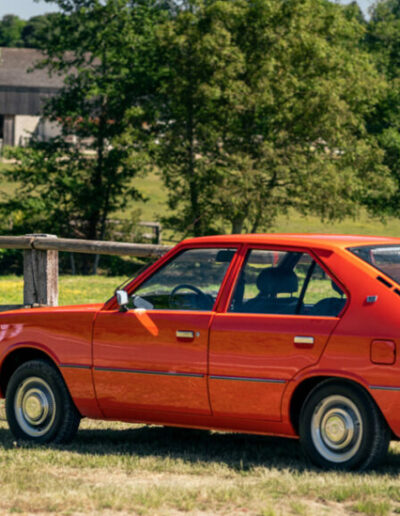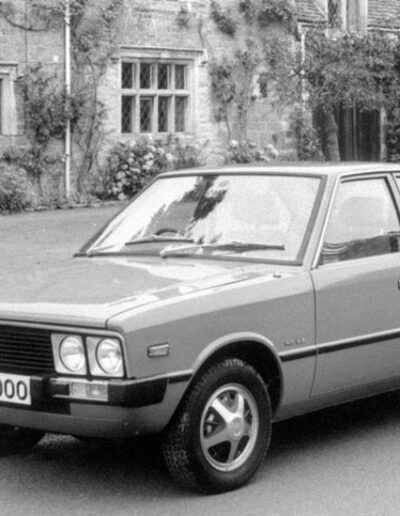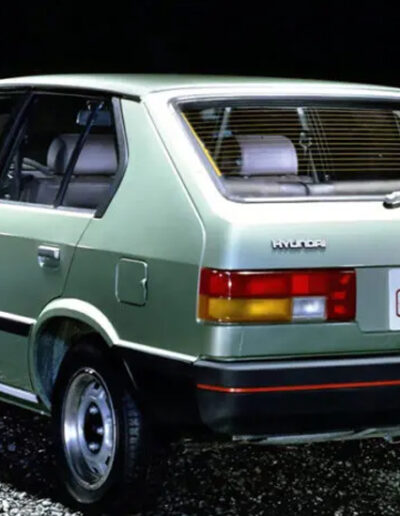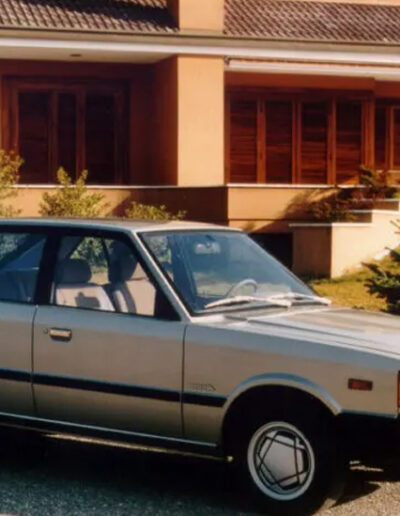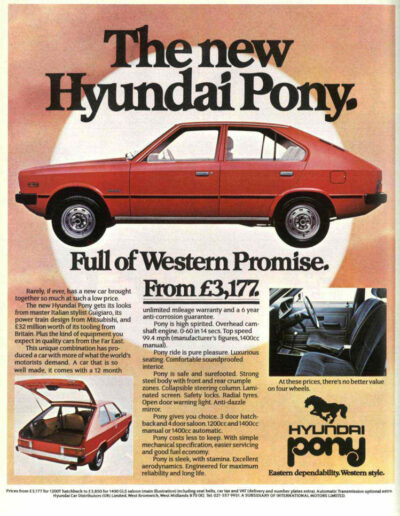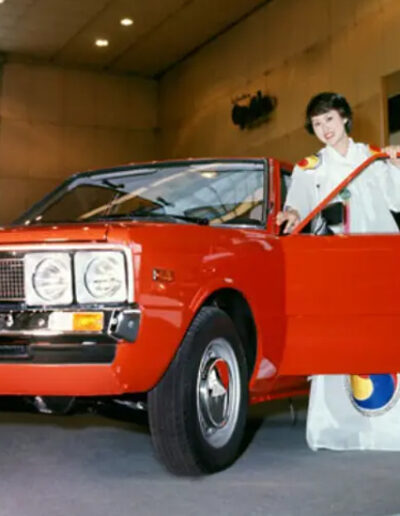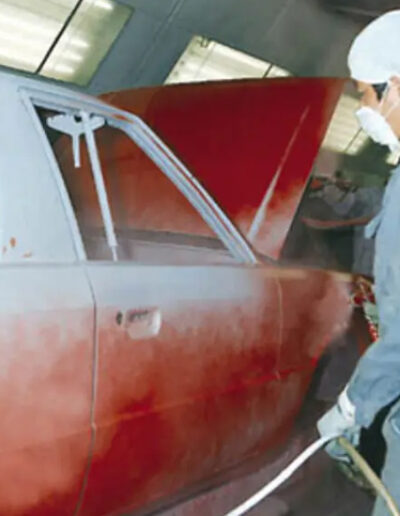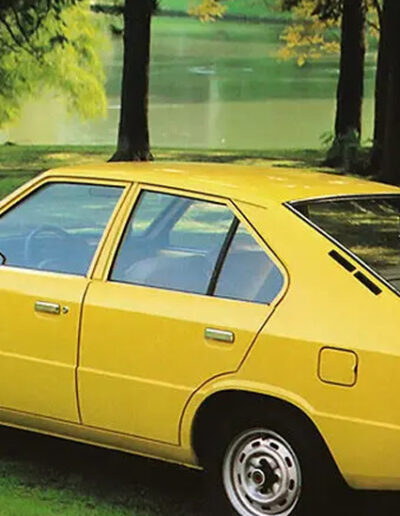The Hyundai Pony
1975
About the Object
Story of the Object
Teaching suggestions
Classroom Extras
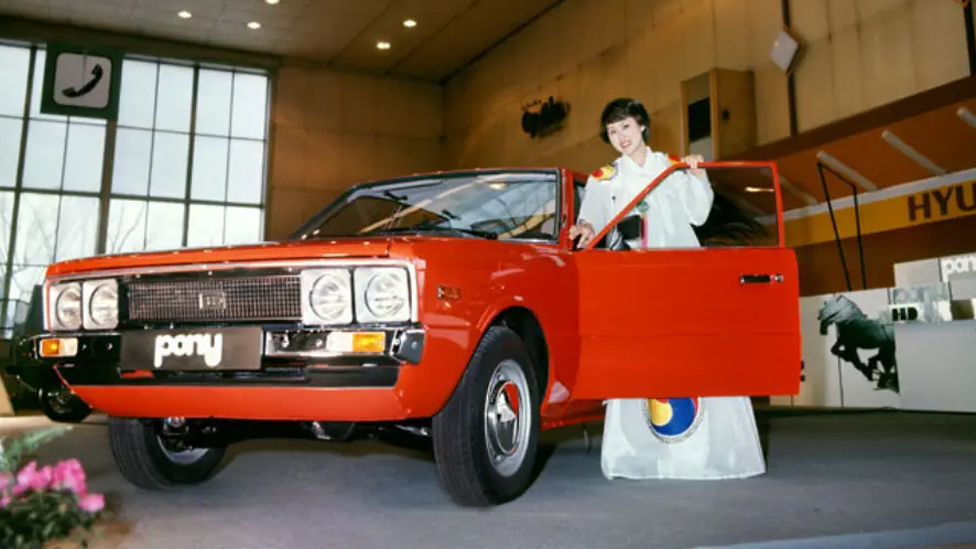
The Hyundai Pony (carspirituk.com)
The Hyundai Pony – South Korea’s first mass produced and exported car
The Hyundai Pony was a car produced by the Hyundai Motor Company between 1975 and 1990.
It was South Korea’s first mass produced car, which was sold within the country and also across the world.
The Hyundai Motor Company was created in 1967 and one year later it released its first model, the Cortina, in cooperation with the US giant, the Ford Motor Company.
However, Hyundai was keen to develop its own car – and the Pony was that vehicle.
The development of the Pony is not just about the development of a car.
It is also symbolic of the story of South Korea, a story of determination, ambition and pride.
It epitomises:
- The determination of the country to be a world class manufacturing power,
- The ambition of a company in producing its own car, and
- The pride of a work force in wanting to show the skill and ingenuity of the Korean people following the destruction of the Korean War of the early 1950s.
Background: The Impact of the Korean War
After the Korean War, the country was one of the poorest economies in the world.
However, by the 21st Century, it had:
- created a powerful manufacturing base,
- become a member of the Organisation of Economic Cooperation and Development (OECD) – the world club for advanced economies – and
- become home to some of the world’s leading industrial corporations.
The war between what became The Democratic People’s Republic of Korea (North Korea) and the Republic of Korea (South Korea) is explored in detail in Object – Statue of Brothers.
The fighting, which started with an invasion of the South by the North in 1950 lasted for three years.
On 27 July 1953 an Armistice was finally signed at Panmunjom which brought the fighting to an end.
Korea was divided into two states with the dividing line running along the 38th parallel or the 38th line of latitude on a world map.
Korea was now a divided peninsula and a divided nation.
Recovery and the ‘Miracle on the Han’
Over the years since that time, North and South Korea have followed very different paths.
South Korea has become a democratic state, and an economic and industrial force in Asia, welcoming foreign culture and ideas. It is a successful capitalist country, with large corporations exporting goods all over the world.
North Korea, on the other hand, is a communist country.
Its economy is focused on supporting one of the world’s largest standing armies. The North Korean nuclear weapons programme has created concerns across the world and has led to much criticism from world bodies like the United Nations.
The war caused immense suffering and destruction across the Korean peninsula. It left upward of two million people dead and cities and towns were in ruin.
The governments of both North and South Korea had to set about rebuilding their respective countries.
Whereas the North made a quicker recovery, by 1961 the South was still a poor nation with only a modest rate of economic growth that was reliant on loans from the United States for its survival.
Despite this slow pace of recovery, there were several signs of better things to come.
As a result of American assistance, thousands of Koreans benefitted from technical training and a constant flow of South Koreans travelled to the US to study such subjects as science, engineering, economics and education.
This period also saw the emergence of entrepreneurs who would provide much talent to stimulate massive economic growth.
In the 1960s South Korea’s economy became dominated by ‘chaebol’, which were large business conglomerates – an organisation which is an amalgamation of many businesses.
Among the entrepreneurs that emerged in this period were:
- Chung Ju-yung, the founder of the engineering and motor manufacturing company Hyundai,
- Koo In-hwoi, the founder of the electronics giant LG,
- Kim Sung-kon, the founder of the engineering and cement manufacturing company SsangYong, and
- Lee Byung-chull, the most successful entrepreneur, whose various business interests merged to form the Samsung corporation.
The determination of these entrepreneurs combined with a skilled labour force, government encouragement and American support led to a period in the 1960s and 1970s when South Korea made rapid economic advances.
Heavy industry, including the car industry, benefited enormously from the South Korean government’s decision to promote the automotive industry as one of the key currency-earners for the country.
What followed was a period of unparalleled economic growth and this improvement has been referred to as the “South Korean miracle” or “the miracle on the Han River”.
The Han River runs westwards in South Korea, passes through Seoul, and enters the Yellow Sea near the border with North Korea.
The description “miracle on the Han” has been used to mirror the economic recovery in West Germany after World War Two which has been referred to as the “miracle on the Rhine”.
The ambition of Chung Ju-yung and the creation of Hyundai
Chung Ju-yung was a remarkable man, one of a handful of people who assisted in the transformation of South Korea in the second half of the 20th century.
He founded the Hyundai Engineering and Construction Company in 1947 which became an integral part of the Hyundai group.
Under his leadership and management, Hyundai Heavy Industries became the largest ship builder in the world, and the Hyundai Motor Group became the largest car manufacturer in Korea, and the fifth largest in the world.
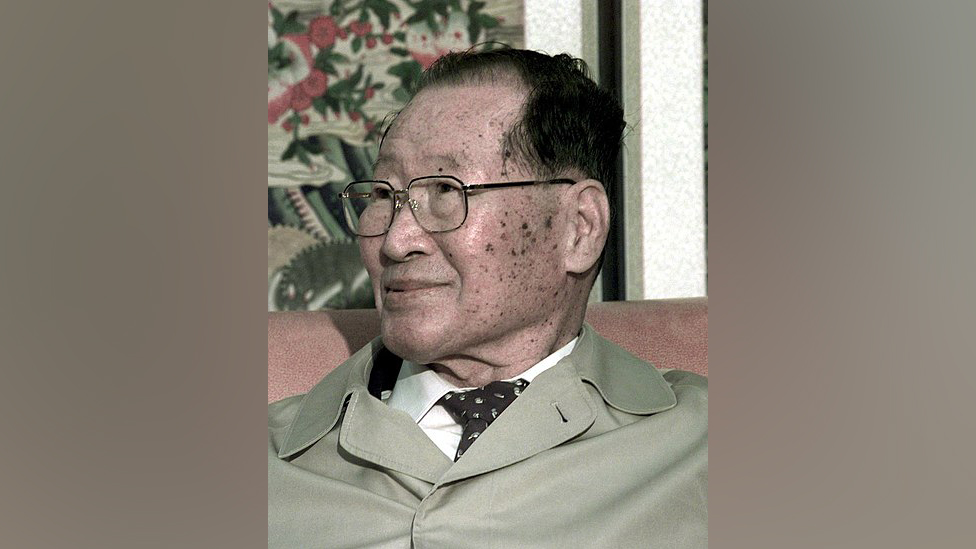
Chung Je-yung
In his early life Chung Je-yung became fascinated by engineering and his ambition was to run his own company.
In the 1940s he set up the A-do Service Garage and began to employee others to work for him.
After the liberation of Korea from Japanese control (1910-1945), Chung started Hyundai and Hyundai Civil Industries, but the Korean War brought his engineering work to a temporary halt.
After the armistice was signed in 1953, he re-established his companies and started to win a number of major contracts.
He was heavily involved in developing South Korea’s post-war infrastructure, including the Soyang Dam (1967), the Gyeongbu Expressway (1970), and the Kori Nuclear Power Plant.
He also won contracts from the United States to build facilities for their forces stationed in South Korea.
His companies were involved in a range of building projects, which show his immense ambition.
For example, he had no experience in shipbuilding, but he created the Ulsan shipyard which became the largest shipyard in the world.
The first vessel was completed in three years, rather than the expected five, because Chung had the shipyard and the ship built simultaneously.
Chung Ju-yung was also a philanthropist. In 1977, he founded the Asan Foundation which was focused upon medical support, social welfare, research and development, and a scholarship fund.
Through its efforts, the foundation established nine hospitals throughout South Korea, built Ulsan Medical College, and funded the Asan Life Sciences Research Institute.
He also successfully lobbied for South Korea to host the 1988 Summer Olympics.
The Games were a great success and highlighted to the rest of the world the achievements of his nation.
The games were also an immense source of pride for the people of South Korea.
For his contribution to enabling sport to be seen as a vehicle of international understanding, the International Olympic Committee awarded him an IOC Medal in 1992.
In his later life, he also worked to improve relations between the North and South Korea.
Despite his range of interests and activities he will be best remembered for creating Hyundai.
The Pony – South Korea’s first mass produced and exported car
“Historically significant with a great creation story”
BBC Top Gear Review of the Pony Feb 2023
The Hyundai Pony was South Korea’s first mass-produced car to be sold at home and abroad.
It was produced between 1975 and 1990.
Since its creation in 1967, the Hyundai Motor Company had built versions of the Cortina under licence from the American car maker, Ford.
However, Hyundai was keen to develop its own car.
This did not mean starting completely from scratch.
Instead, the company sought out talent from across the world.
In 1974 George Turnbull, the former managing director of Austin Morris at British Leyland, was hired to oversee this project.
He had considerable experience in car production and had overseen the development of the Morris Marina.
When he left British Leyland he was given a Marina saloon and coupe as parting gifts and these cars helped to inform how he and his team approached creating the Pony.
In turn, he hired five other top British car engineers.
They were Kenneth Barnett, John Simpson, Edward Chapman, John Crosthwaite and Peter Slater who between them they would be responsible for design and engineering.
The Italian, Giorgetto Giugiaro at Italdesign, was hired to design the body style of the car and Mitsubishi engines from Japan were purchased to provide the power.
In effect, the Pony was influenced by the knowledge Hyundai had gained from studying the Cortina it had produced with Ford and the Morris Marina which had been the car Turnbull had worked on in the UK.
As a result, when the car was marketed, it was advertised under the slogan “Eastern dependability. Western style”.
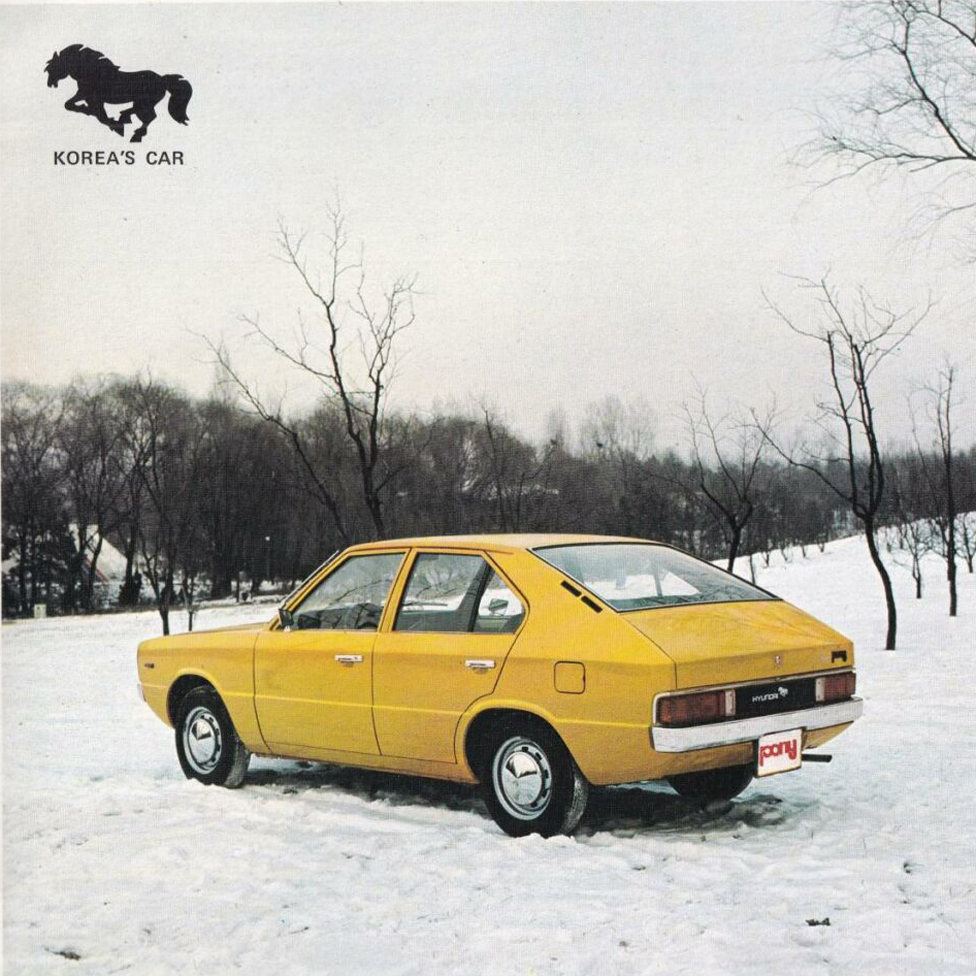
The Hyundi Pony (carspiritpk.com)
It was launched at the Turin Motor Show in October 1974 as a coupe concept car and in the years that followed other models were produced including a five-door hatchback model.
The Pony was South Korea’s first car to be exported and it was sold across Europe, the Middle East, South America and North America – in Canada it became one of the top-selling cars.
The car was remodelled in 1982 and in the spring of that year the Pony II was launched onto the UK market, making it the first Korean car to be sold in the UK.
In March 1982 the British car magazine Motor tested the Pony – its top speed was recorded as 92 mph with an acceleration rate of 0-60 mph in 15.3 seconds.
In the league table of cars by price, the Pony was regarded as a budget car alongside the Lada, Skoda and some of the cheaper Japanese brands.
At launch in the UK, it cost between £3,177 and £3,850.
The Pony was seen as bland and uncharismatic, but it was a popular car in the UK and was regarded as reliable.
Although the Pony was not made after 2000, in April 2021 Hyundai displayed the Pony Heritage EV, a reinterpretation of the first-generation Pony converted to be an electrically driven car as a concept, at the Hyundai Motorstudio in Busan.
And in 2023, Hyundai created an exhibition commemorating the “timeless” Pony, at the company’s Motorstudio in Seoul.
The focus here was on how the Hyundai Motor Company was shaped by “the experience and mindset” which was “accumulated while developing the Pony”, the car which has provided “an opportunity for people to reminisce about the past and take inspiration for the future”.
Jaehoon Chang, President and CEO of Hyundai Motor Company.
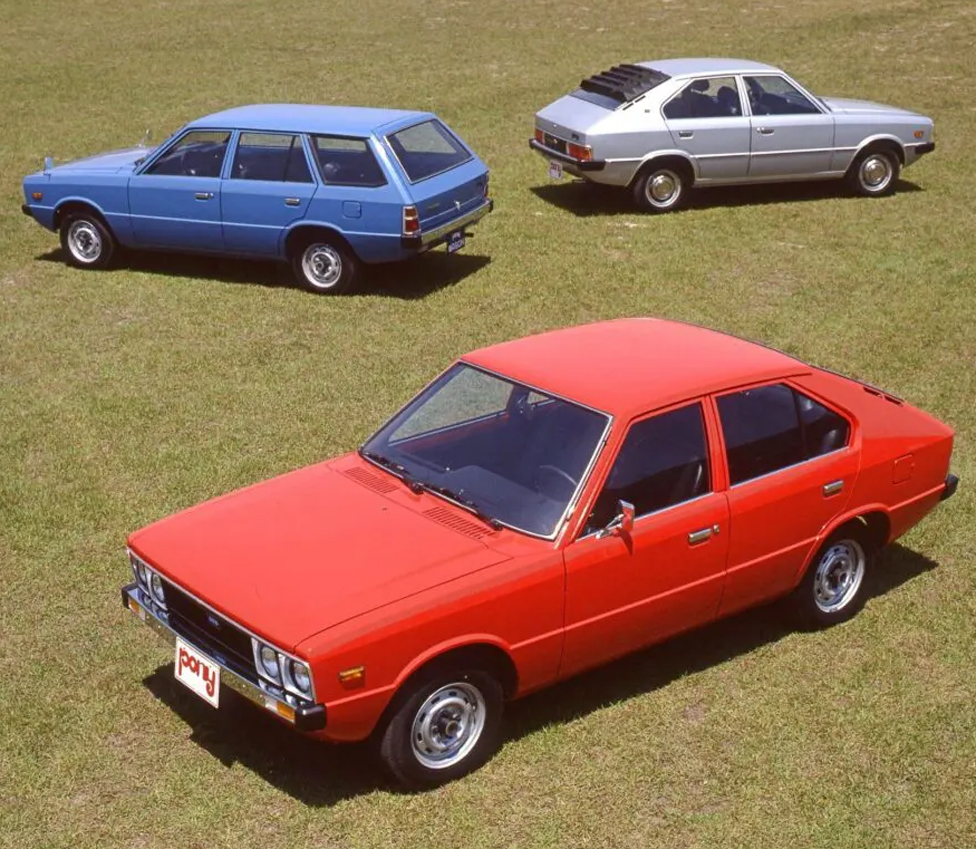
The Hyundi Pony (carspiritpk.com)
The significance of the Pony
The story of the growth of Hyundai from inauspicious beginnings to be in 2022 the tenth largest manufacturer of cars in the world is one of ambition and determination.
However, it is also one of a company which was keen to use the knowledge and expertise which already existed from across the world.
This was an immensely successful strategy, and, with the creation of the Pony car, Hyundai used foreign talent in all its forms so that it could produce a car which would sell in foreign markets as well as at home.
As George Turnbull pointed out in an interview for the BBC TV programme Panorama in 1976, “they had made their decision to get into the motor industry… and in a big way”.
This determination is well demonstrated by the fact that within a year the company had built and equipped a complete factory from scratch to produce the new car.
In addition, although the Pony started life as a mix of parts from across the world, the proportion of locally produced parts eventually reached an impressive 90%.
Hyundai also adopted a clever marketing strategy with the slogan “Eastern dependability; Western style” and the strap line “Full of Western promise”.
In effect the sales team focused upon reassuring potential customers that the car looked like what they were accustomed to in car design but came with a reliability that some other makers’ models had so far lacked.
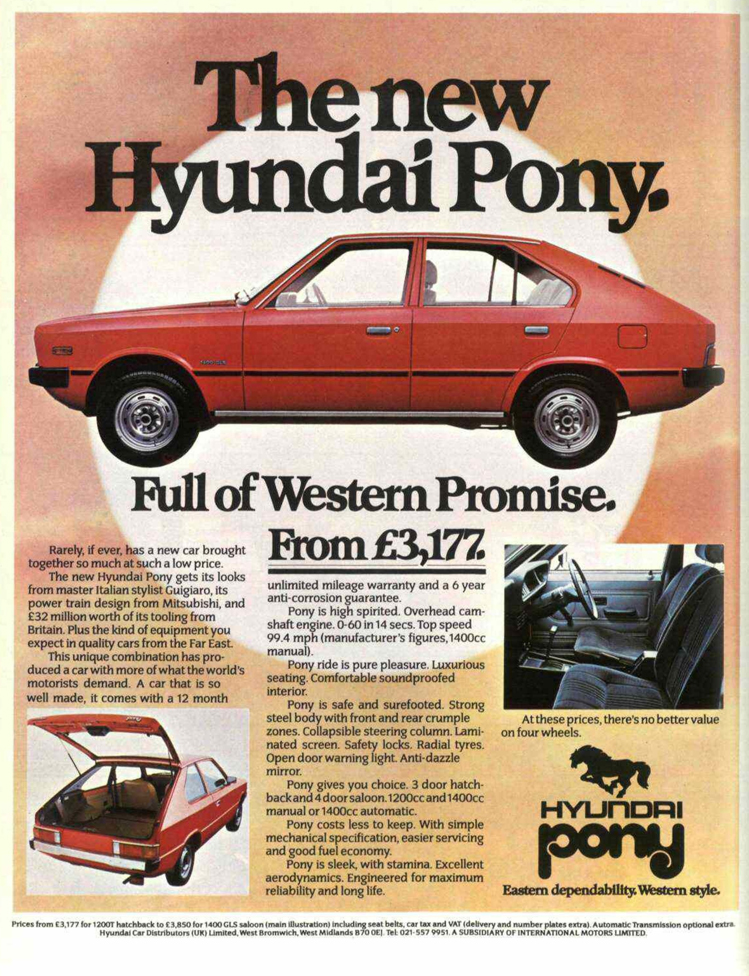
An advert for the Hyundi Pony (Motor Sport Magazine)
The Pony was highly important for the South Korean economy.
It created a car boom inside South Korea and became the first South Korean car to appear in overseas markets.
In 1970, there were merely 130,000 cars in the nation. In 1985, soon after the debut of the Pony, the number reached one million.
In 1995, there were eight million cars in Korea, and in 2010 the number of motor vehicles reached 17 million.
In relation to the export market, since the early 1990s between half and two thirds of all Korean cars have been sold overseas.
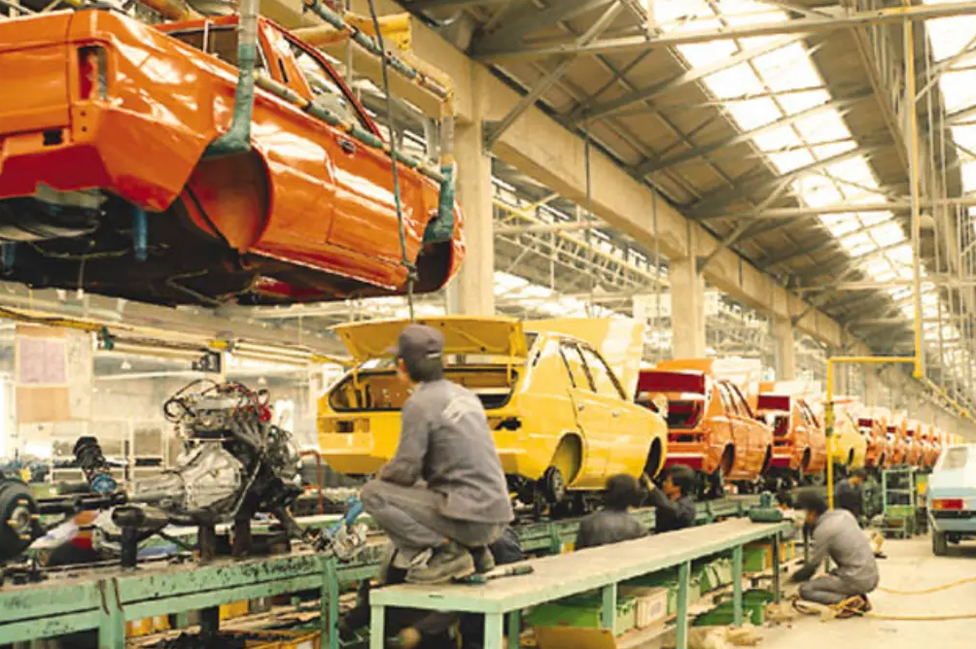
The Hyundi Pony in production
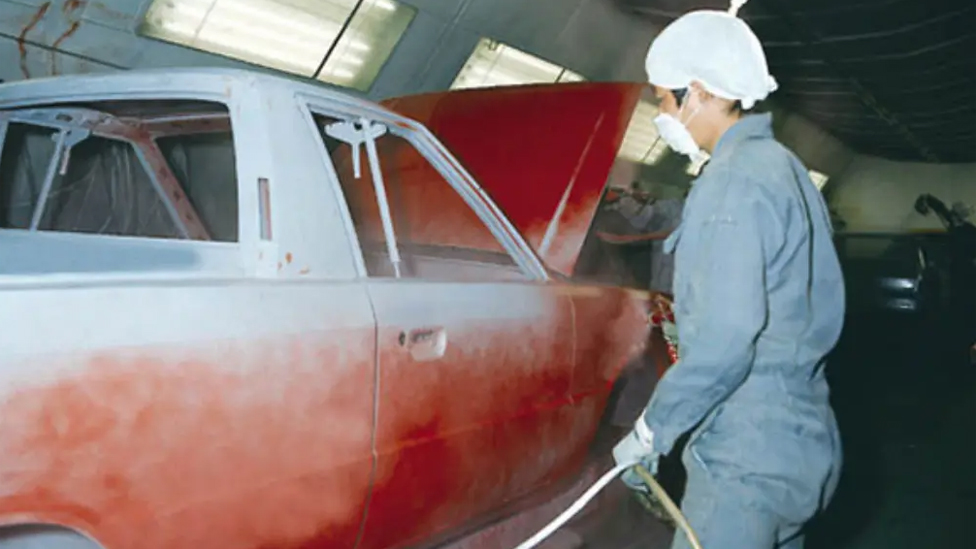
The Hyundi Pony in production
Its success home and abroad brought employment for the South Korean people, prosperity for the economy and influence for the country around the world.
By 2011 the automobile industry as a whole comprised 11% of South Korea’s manufacturing output, 10.5% of its manufacturing workforce and 12.3% of its total exports.
Guide to the National Museum of Korean Contemporary History, Seoul, 2012, p.230
The birthplace of the Pony was Hyundai Motors Ulsan Plant which is now the world’s largest single plant.
It is made up of five independent factories, with approximately 32,000 personnel producing an average of 1.5 million cars a year – the equivalent of 5,800 vehicles per day or about one car every 20 seconds.
The plant is situated next to the port of Ulsan where there are berths where three 50,000-ton ships can anchor simultaneously. It has its own fire station, hospital, and patrol cars.
The state-of-the-art facilities also focus on preserving the environment by, for example, including a waste-water disposal plant and over 600,000 trees planted within the area, making it a factory surrounded by a forest.
Visit Korea: Hyundai Motors Ulsan Plant
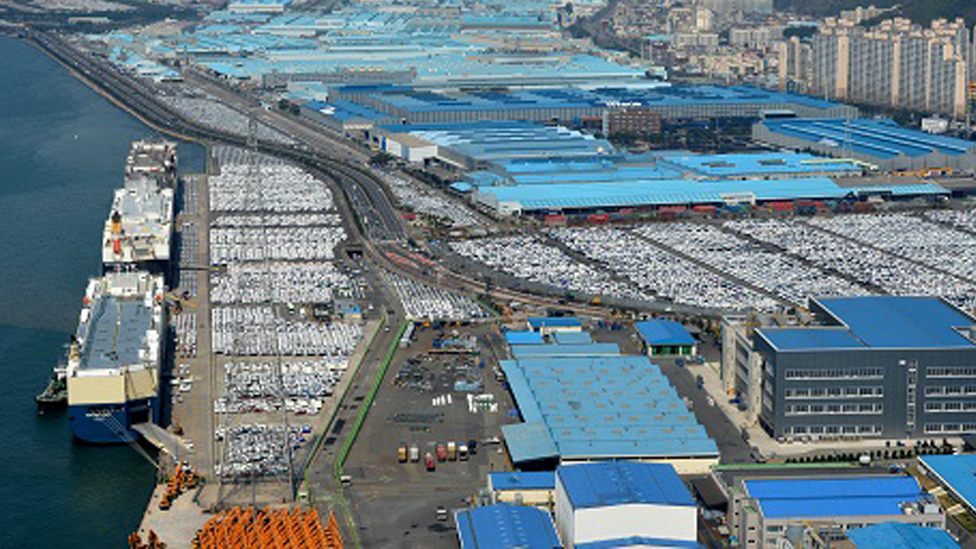
Hyundai Motors Ulsan Plant
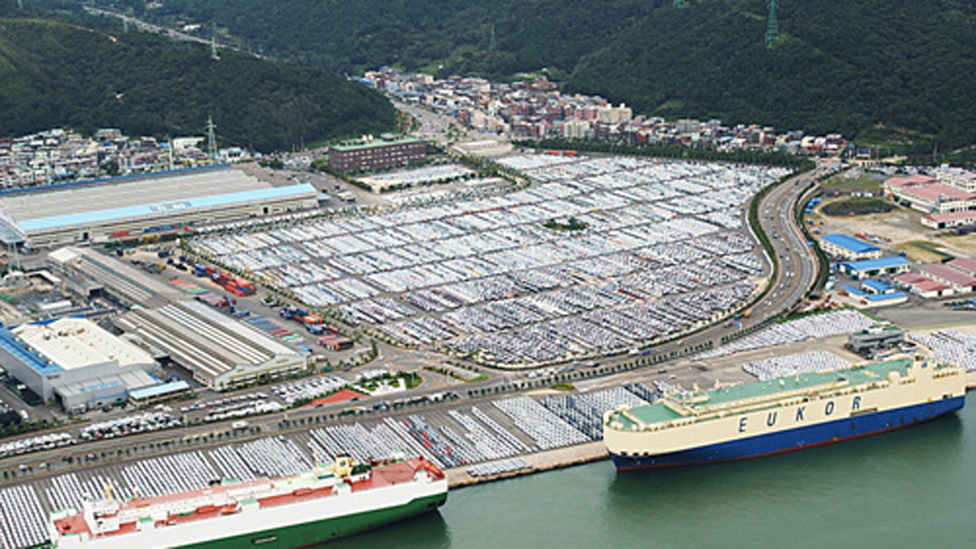
Hyundai Motors Ulsan Plant (Visit Korea)
In the 1976 interview with Panorama, George Turnbull stated that he aimed for a design, “which would easily be put into production, would be reliable and durable, and would give considerable, customer appeal and no real annoyance to customers”.
The Pony would appear to have comfortably achieved these ambitions and much more.
Retrieval practice
Why not create some short multi-choice quizzes to test what students can recall about the content they have just learned about? Create a quick test of 8, 10, 12 or 20 questions. Here are three examples:
1. When was the Hyundai Motor Company created?
a) 1965
b) 1967
c) 1969
2. The period in the 1960s and 1970s when South Korea made rapid economic advances is sometimes referred to by what name?
a) The Miracle on the Han
b) The Great Boom
c) The Korean Golden Age
3. The Hyundai Pony was launched at which motor show in October 1974?
a) The Birmingham Motor Show
b) The Frankfurt Motor Show
c) The Turin Motor Show
Mass-produced cars
The Hyundai Pony, produced by the Hyundai Motor Company between 1975 and 1990, was South Korea’s first mass produced car sold not only in South Korea, but across the world.
Ask pupils to research other well-known mass-produced cars from a variety of different companies. Perhaps set a target of 3, or 5, or 10. This could be an individual or group project.
Create fact files for each one:
- When was it first made? (and is it still made?)
- Who designed it?
- Why was it so popular?
- What impact did it make?
- Add pictures.
There are many examples, from all over the world. Get pupils to identify similarities and differences.
Examples that are easier to find information on include: The Ford Model T produced by the Ford Motor Company from 1908 to 1927; The Mini produced by the British Motor Corporation (BMC) and its successors, from 1959 until 2000; The Volkswagen Beetle (officially the Volkswagen Type 1) manufactured by Volkswagen (VW) from 1938 until 2003.
A Timeline
Hyundai has been a key business that has helped South Korean rapid economic development. The company has an interesting history, first working with the American car maker, Ford on the Cortina.
To provide your pupils with some context for this object you could ask them to create a timeline of some of the key events in the history of Hyundai.
Choose one (or perhaps all) of the following:
- Create a timeline (or fact file) of the whole company beginning in 1947. There might be several branches to your timeline because the Hyundai Group has expanded into various industries.
- Create a timeline (or fact file) for the Hyundai Motor Company, established in 1967.
- Create a timeline (or fact file) for Chung Ju-yung.
What was going on in the world?
The Pony was first produced in 1975 in South Korea. To help place this object into context it’s a good idea to ask your pupils to find out what else was going on in the world in that year.
They could work individually or in groups and investigate three, five or even seven different key events from 1975. Pupils could focus on what happened and the significance of the event. Some of the things that you could get them to focus on are:
- The Vietnam War ends
- Margaret Thatcher becomes British Prime Minister
- The Khmer Rouge carries out genocide in Cambodia killing 2 million people.
- Microsoft is founded.
- The IRA continues its bombing campaign on mainland Britain.
Transport over Time
Why not get you pupils to look at the historical concept of change over time. You could investigate how transport has changed over time. They could find out when the following types of transport were most popular:
- Horse drawn power
- Wind power
- Steam power
- Motor power
- Electric powered vehicles.
You could then get your pupils to think about how they would describe the pace of change within this theme. Perhaps give them some key words that they can choose like glacial, progressive or slow, or get them to come up with their own.
Similarity and Difference between electric cars and petrol cars
Hyundai has recently focused on building electric cars. Help your pupils understand why there has been such a push towards electric and away from petrol cars by asking them to research and find out the similarities and difference between the two types of car.
You could get them to focus on:
- Environmental impact
- Operating cost
- Fuel costs
- Accessibility to fuel
- Driving experience
- Price
- Maintenance
Classroom Extras
Here you will find a number of images, video clips and website links which can be used as extras for teaching in the classroom or for use by pupils undertaking independent research.
Images
:
Map
Select Google Maps options to view key locations for different objects:
Videos
Watch these videos about the Hyundai and the Pony:

Discover more online
Hyundai: Articles about the Pony
BBC Top Gear: Review of the Pony February 2023
Hyundai: The Timeless Pony
Wikipedia: Hyundai Pony
Wikipedia: Chung Ju-yung
Wikipedia: Hyundai Motor Company
Hyundai: Over 50 years of progress – the history of Hyundai
Road and Truck: How Britain gave Hyundai its first car, unintentionally
Facts and details: Hyundai Motors: History, plants, rising status and CEOs
Classic World: The rise of the Korean car industry
Visit Korea: Hyundai Motors Plant, Ulsan
Korea Times: Korea’s first mass-produced car

